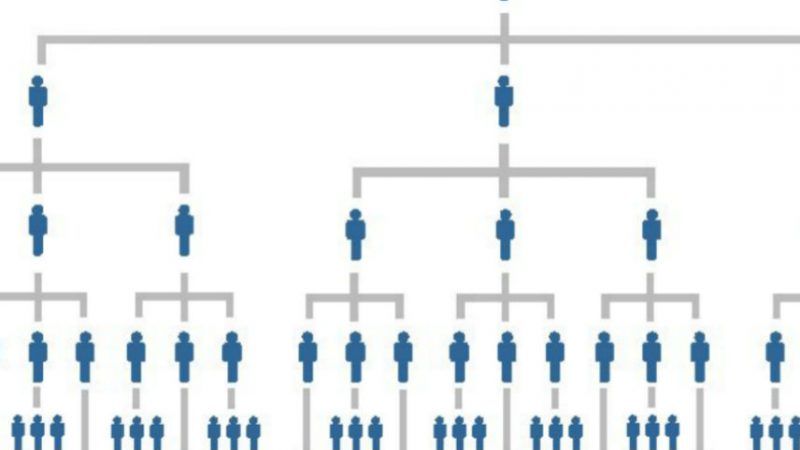This White House Chart About Chain Migration Is Misleading
The U.S. immigration system makes bringing family members into this country very difficult and time consuming.

The White House's official Twitter account tweeted this chart earlier this week:
It's time to end Chain Migration: https://t.co/kad5A8Slw7 pic.twitter.com/735JzAZIUa
— The White House (@WhiteHouse) December 18, 2017
First of all: Terrible infographic design. How are these generic stick people related? Spouses? Siblings? Are these generations? Who knows?
But let's assume this is just a very simple illustration of the idea that one legal immigrant can currently bring over their closest relatives and then those people can do the same. (Note that well over half of the family-based immigration in the U.S. consists of spouses or children—the kind of family reunification very few people would consider a violation of the spirit of the law.) Hypothetically, though, maybe the third person in each layer of the chart is an adult sibling of an immigrant.
But legal immigrants do not have immediate rights to bring over their entire extended family. Far from it.
In fact, the time scale of the White House chart is a century or more. Each tier represents many, many years stuck in the immigration bureaucracy. As Reason's Shikha Dalmia has explained in our pages:
That is not how America's immigration system actually works.
For starters, there is no provision in U.S. immigration law for either permanent residents (green-card holders) or American citizens to sponsor non-nuclear relatives such as aunts, uncles, nieces, nephews, grandchildren, grandparents, or cousins to come to the United States. Other than spouses, parents, and minor children, the only relatives who can be sponsored are adult children and siblings. And depending upon the green card backlogs for their country, this process could take them anywhere from 15 to 25 years.
This means that if a typical 26-year-old foreign woman were to get married to an American citizen, and then sponsor her 25-year-old sister to get a green card, that sister would be 40 years old before she could obtain permanent residency. If she's a Filipina, her sister would be closer to 50 years old. If the sister then sponsored some other immediate relative, that person would have to go through a 15- to 25-year process as well. Over a half a century, then, most families could at best traverse two links in the alleged "chain," hardly the kind of thing that would result in mass migration. Most people have built lives for themselves in their home countries by that age and, when their turn comes, they opt out.
This is not a chart that shows the looming threat of waves of foreigners assaulting our shores and threatening our way of life, it's a representation of a gradual legal process whereby people come to our country to work, live, and build communities and families. Why should we be worried about the little stick people at the bottom of the chart? They will land on our shores having cleared every legal hurdle over a century from now. When they arrive, they will be embedded into a multi-generational family support network that is already established and assimilating.
What's more: Every single person in that chart came to this country legally, something politicians of both major parties have historically said they support.


Show Comments (146)